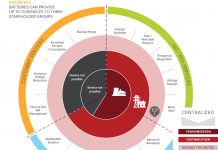John Petersen
On October 20th, Maxwell Technologies (MXWL) announced that it has commenced volume deliveries of BOOSTCAP® ultracapacitors to Continental AG (CTTAY.PK) for use in a new stop-start idle elimination system for diesel passenger cars made by PSA Peugeot-Citroen (PEUGY.PK). According to Continental, Peugeot-Citroen plans to sell about a million cars equipped with this technology over the next three years. While the Maxwell design win has been rumored for months, it’s great to have confirmation that stop-start is here, it’s now and it will become a major new energy storage market over the next three to five years. With an estimated three-year value in the $50 million range, the Continental contract should provide a significant boost for Maxwell’s top-line revenue.
Stop-start systems are baby steps in vehicle electrification and the most reasonable concept you can imagine – if the car isn’t moving turn the engine off to save fuel and reduce emissions. Under normal conditions, a stop-start system can boost fuel economy and reduce emissions by about 5%. The savings can be up to 15% if a lot of stop and go city driving is involved. While stop-start systems make a world of sense, they’re not as sexy as cars with plugs. As a result, stop-start gets precious little media attention despite the fact that for the foreseeable future the fuel savings from stop-start will be an order of magnitude greater than the fuel savings from cars with plugs and the cost per gallon of fuel savings will be at least 50% less.
It’s no secret that I believe cars with plugs are an impossible daydream that’s been sold to the mathematically and economically challenged by environmental activists and other hucksters. They’re no better than Prius-class HEVs when it comes to air pollution; they’re wasteful users of batteries; they’re suboptimal users of other scarce resources; they’re largely untested when it comes to safety, reliability and performance; they’re not recyclable in existing facilities; and they’re expensive beyond reason – the intense pink diamonds of eco-bling. These are not minor technical issues, they’re congenital birth defects. Despite the media hype and the occasional blistering comment on my work from EVangelicals quoting The Gospel According to Elon (TSLA), I’m convinced the next generation of cars with plugs will be stillborn, just like all the others.
Unlike cars with plugs that will depend on consumer choice to restore a dash of uncertainty and adventure to the driving experience, stop-start implementation is being forced by existing fuel economy and emissions standards in the EU and the US, and by proposed standards in Asia. In the simplest terms stop-start is destined to become a global standard on cars with internal combustion engines by the end of this decade.
Under new EU standards, the fleetwide CO2 emissions for passenger cars must be reduced to an average of 130 grams per kilometer according to the following timetable.
| Calendar Year |
Percent of Fleet |
CO2 Emission Standard |
MPG Equivalent Gasoline |
MPG Equivalent Diesel |
| 2012 | 65.00% | 130 g/km | ~ 42 | ~ 48.2 |
| 2013 | 75.00% | 130 g/km | ~ 42 | ~ 48.2 |
| 2014 | 80.00% | 130 g/km | ~ 42 | ~ 48.2 |
| 2015 | 100.00% | 130 g/km | ~ 42 | ~ 48.2 |
Similarly, under new US standards, the fleetwide average fuel economy for passenger cars and light trucks must meet the following targets.
| Model | Passenger | Light | Combined |
| Year | Cars MPG | Trucks MPG | Fleet MPG |
| 2012 | 33.3 | 25.4 | 29.7 |
| 2013 | 34.2 | 26.0 | 30.5 |
| 2014 | 34.9 | 26.6 | 31.3 |
| 2015 | 36.2 | 27.5 | 32.6 |
| 2016 | 37.8 | 28.8 | 34.1 |
While stop-start is not enough to satisfy all of the new regulatory requirements, it is the lowest hanging fruit on the vehicle efficiency tree and industry experts are predicting that it will be used in 20 million cars per year by 2015. If plans to make stop-start systems mandatory on all internal combustion vehicles in China are implemented, the number could be closer to 40 million cars per year by 2015.
The big drawback to stop-start is that the technology puts a lot of strain on starter batteries that need to start the engine several times during a commute and support lighting and accessory loads during engine-off intervals. Based on their experience with early stop-start models in Europe, the automakers have learned that conventional flooded lead-acid batteries are not robust enough. Therefore, most current stop-start vehicles have dual-battery systems that rely on more expensive valve regulated absorbed glass mat technology. While systems with dual VRLA batteries are a definite improvement, the rates of battery degradation are still unacceptably high and the automakers are actively evaluating alternatives.
At last month’s 11th European Lead Battery Conference in Istanbul, BMW and Ford presented a joint paper that proposed a technology-agnostic testing protocol to assess the impact of battery aging under real world stop-start driving conditions. The protocol focuses on dynamic charge acceptance, or the amount of time required for a battery system to recover from the last engine-off event. The specific steps include:
| 1. | A 60 second discharge at 50 Amps to simulate accessory loads during engine-off intervals. | 36,000 watt-seconds |
| 2. | A one second discharge at 300 Amps to simulate the engine restart load. | 3,600 watt-seconds |
| 3. | A seven second rest period to avoid recharging the battery while the vehicle is accelerating; and | |
| 4. | Measurement of the time needed to recharge the battery for the next engine-off opportunity. | 39,600 watt-seconds |
The technical approach taken by Maxwell and Continental focuses on the second step, an intense discharge for a second or less when the engine restarts and the load on the vehicle’s electrical system is heaviest. This interval is particularly important in the case of a diesel engine because higher compression ratios increase the starter load. The expectation is that shifting a portion of the heaviest loads to a BOOSTCAP will help protect the balance of the electrical system and extend battery life. Since Peugeot-Citroen was an innovator in the field of stop-start, I think the Maxwell-Continental system is an step in the right direction.
Regular readers know that I’m a former director of Axion Power International (AXPW.OB), a company that’s developing a lead-carbon battery-supercapacitor hybrid that will undoubtedly compete with the Maxwell-Continental system for a share of the stop-start market. Unlike many who believe in the idea of a silver bullet energy storage technology, I’m delighted to know there will be a variety of competitive systems vying for a share of this emerging multi-billion dollar market. The inescapable reality is that that no single technology is likely to dominate and there will be plenty of room at the table for several successful companies. On balance, the biggest challenge I foresee will be ramping up production capacity fast enough to satisfy demand.
In addition to Maxwell and Axion, Johnson Controls (JCI) and Exide Technologies (XIDE) will be vigorous competitors for a share of the stop-start battery market. Their manufacturing expertise, global footprints and industry relationships must not be ignored.
The bottom line for investors is that a multi-billion market for advanced energy storage systems that can stand up to the demands of stop-start is developing in the real world while the media is distracted by the plug-in vehicle sideshow. Unless you’re more knowledgeable than me, a diversified portfolio approach will be the safest way to play the automotive stop-start market.
Disclosure: Author is a former director of Axion Power International (AXPW.OB) and holds a substantial long position in its common stock.








Hey, wait a minute. Since energy is neither created or destroyed stop start systems are a zero gain. Power out of the battery or cap used for restarting the engine has to be replaced by the engine. So it’s wash. No, it’s a not a wash considering conversion efficiencies. So unless the battery or cap is recharged with regenerative braking the idea is a bunch of bull!
The power to restart the car comes from the car itself, so there is no net benefit in the electrification until you get into systems that add modest recuperative braking.
There is a substantial gain, however, in not leaving the engine running at idle while the car is stationary and waiting for a stop-light.
John,
What’s the energy capacity of the batteries used in a stop/start system?
Unlike the NiMH batteries used in most hybrids, it’s my understanding that PbA batteries last longest if they are kept fully charged. It therefore might make sense to add a plug to a vehicle with Stop/Start ability to charge it up when the car is parked, and save some energy charging the battery after the car is started.
The same theory would make sense for standard hybrids, except for the fact that keeping NiMH batteries at full charge degrades them over time.
Your thoughts?
The battery configurations vary as manufacturers try to find the best solution, but the most typical systems have 110 to 120 Amp Hours, or a little over 1 kWh.
Lead-acid batteries do prefer a 100% state of charge. The problem is that as the batteries approach a 100% SOC, they accept charge more slowly. If your goal is to minimize the recovery time in preparation for the next engine-off opportunity, setting the minimum SOC at 80% or so results in a better stop-start system performance.
Ultimately it’s a trade-off between getting the most life out of the battery or getting the most utility out of the stop-start system. Since some of the advanced systems do both, I believe the automakers will ultimately bite the bullet and go for the more expensive solution because the cost differential is simply not that great.
That sounds like there might be an advantage to adding a plug or small solar panel to a car with a stop-start system. When the car is parked, if could be charged from 80% SOC to 100% SOC (or about 200Wh) from external power, both prolonging the life of the battery and saving a little fuel when it is next driven (because the alternator would not need to run as much during the first 1 or 2 stop/start cycles.)
Depending on the efficiency of the alternator, 200 Wh from an external source will save about 1/30 of a gallon of gas (10 cents) for the price of about 2 cents of electricity. Most people would not find the 8 cent savings to be worth plugging in each night, unless the gain in battery lifetime were very significant. Any idea how much this might extend battery lifetimes, and what that would be worth?
My best guess is that the gains would be modest enough that they wouldn’t justify the added cost and complexity, but that’s just a guess. Working out the detail is a bit beyond my paygrade.